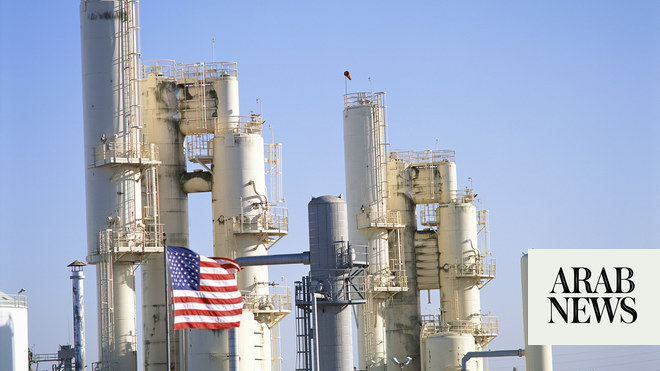
RIYADH: Oil prices bounced on Tuesday, steadying after a sharp fall of 4 percent in the previous session as worries over China’s fuel demand were soothed by the central bank’s pledge to support an economy hit by renewed COVID-19 curbs.
Brent crude futures were at $103.50, up 1.15 percent, while the US West Texas Intermediate contracts climbed to $99.41, up 0.88 percent at 0448 GMT.
Both contracts had settled down around 4 percent on Monday, with Brent falling as much as $7 a barrel in the session and WTI dipping roughly $6 a barrel.
Fitch revises Saudi Aramco"s outlook to positive
Ratings agency Fitch on Monday revised its outlook for state-owned Saudi Arabian Oil Co., Saudi Aramco, to “positive” from “stable.”
The agency had raised its outlook on Saudi Arabia to “positive” from “stable” earlier this month on the back of improvements in the country’s sovereign balance sheet thanks to higher oil revenues
EU aims zero dependence on Russian oil
The EU aims to reduce its dependence on Russian oil and gas by two-thirds by the end of the year and to zero by the end of 2027, the bloc’s Economic Commissioner Paolo Gentiloni told Italian daily Il Messaggero in an interview published on Tuesday.
Gentiloni also told the paper that the EU would cut its own growth estimates for 2022 from a previous target of 4 percent, adding however that it is too early to say if the slowdown will lead to stagnation.
US ditches Trump-era policies for Arctic Alaska oil reserve
Meanwhile, the Biden administration on Monday overturned a controversial Trump-era policy that would have opened new swathes of Arctic Alaska to oil development.
The Bureau of Land Management, part of the Department of Interior, resurrected Obama-era management policies in the National Petroleum Reserve in Alaska, a 23-million-acre area on the western side of Alaska’s North Slope.
Those reinstated policies, contained in a plan issued in 2013, allow oil leasing in about half of the reserve while boosting protections for areas considered important to the Arctic ecosystem and to indigenous residents.
The plan by the administration of former President Donald Trump, issued in 2020, sought to allow oil development on more than 80 percent of the reserve. It would have allowed leasing even at Teshekpuk Lake, the North Slope’s largest lake and an area prized for wildlife that had been protected under rules dating back to the Reagan administration.
The Trump plan was challenged by two lawsuits filed in the federal court in Alaska. No lease sales were ever held under it. The BLM action reinstating Obama-era management policies was part of the Interior’s response to those lawsuits.
(With inputs from Reuters)












